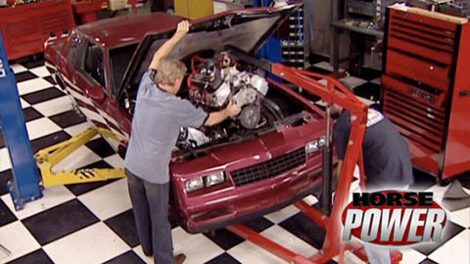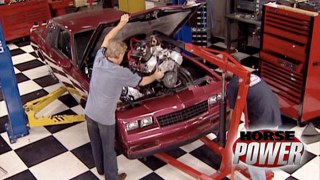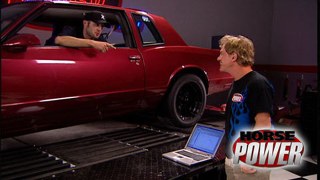More Monte Carlo Episodes
HorsePower Builds
Want more content like this?
Join the PowerNation Email NewsletterParts Used In This Episode
ARP
Flywheel bolts.
Chevrolet Performance
ZZ502/502 Deluxe.
Fidanza
Clutch assembly, throwout bearing, balanced, flywheel.
Fitch
Fuel catalyst, drop-in catalysts.
Flowmaster
3 inch exhaust tubing kit, super 40 muffler, stainless exhaust tips.
Holley
-12 Fittings for plumbing dry sump tank.
Holley
Full length ceramic coated headers for '00-'02 Camaro.
Honest Charley
Transmission cross-member for Richmond 5 speed overdrive.
Hotchkis
Rear control arms, coil springs shocks by Bilstein, sway bars and end links, tie rod sleeves, and hardware.
Hypertech
Max Energy programmer.
Lakewood Industries
Safety bellhousing, clutch fork, solid pilot bearing, safety plate, clutch fork boot, adjustable pivot ball, adjustable dowel pins.
Latoff Chevrolet
Accessory drive with A/C.
Master Power Brakes
12 " front brake rotor upgrade with master cylinder and power booster.
Master Power Brakes
FORD 9 inch, 31 spline axels, 5x4.75 B/C, locker diff, 4.11 gear, 1/2 studs, rear disc brakes.
Moroso
Dry sump tank and mounting bracket.
Optima
Yellow top battery/Red top battery.
Precision Measurement Supply
Bellhousing indexing tool.
Prothane
Motor mount inserts.
Richmond Gear
Five speed overdrive.
Spectre Performance
4" silicone couplers, red cone filters, 4"X3.5" couples, intake tubing 45 degree bends, intake tubing 60 ° bends, Y-pipe.
Taylor Cable Products
Battery box and hold downs, made for Optima batteries.

































